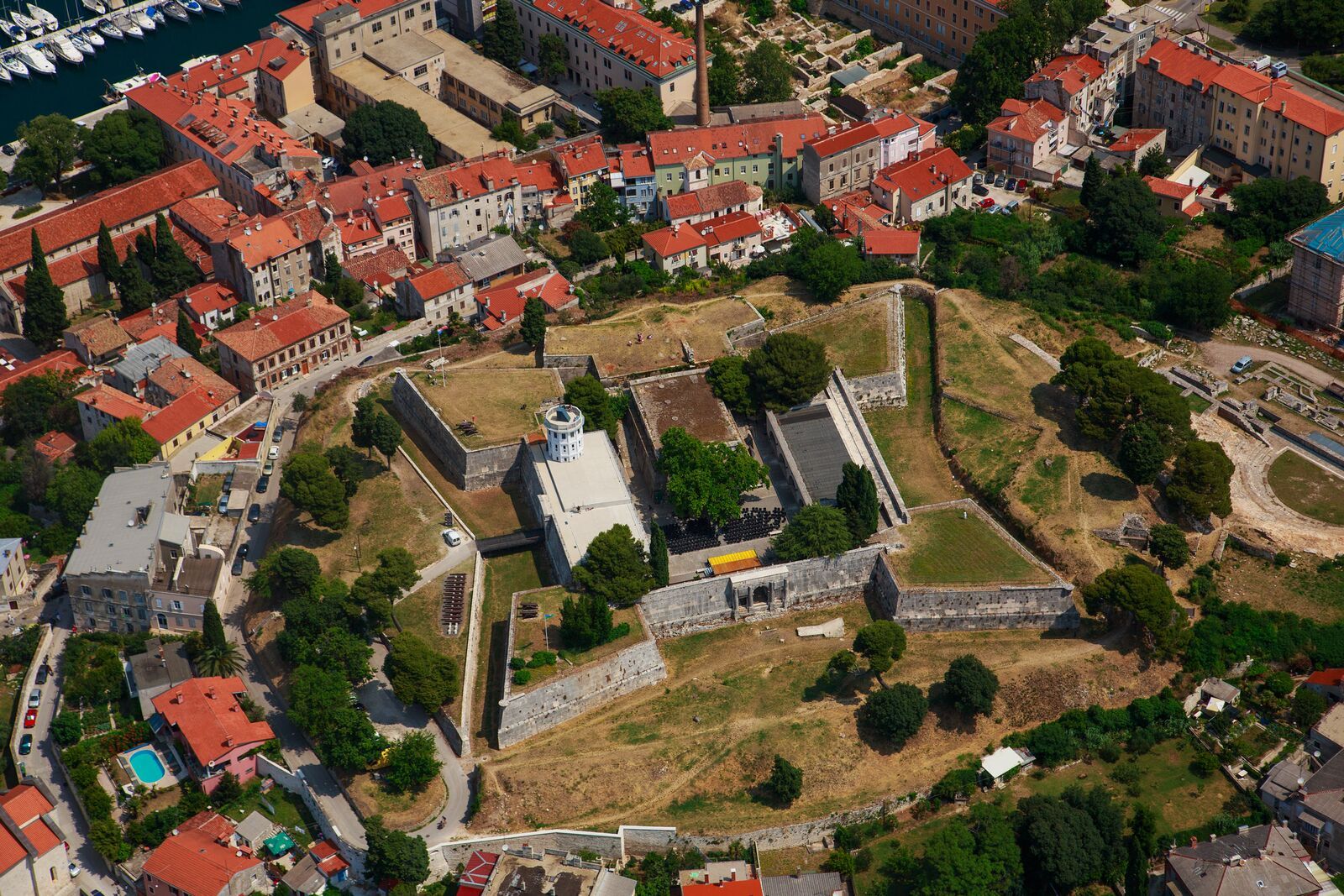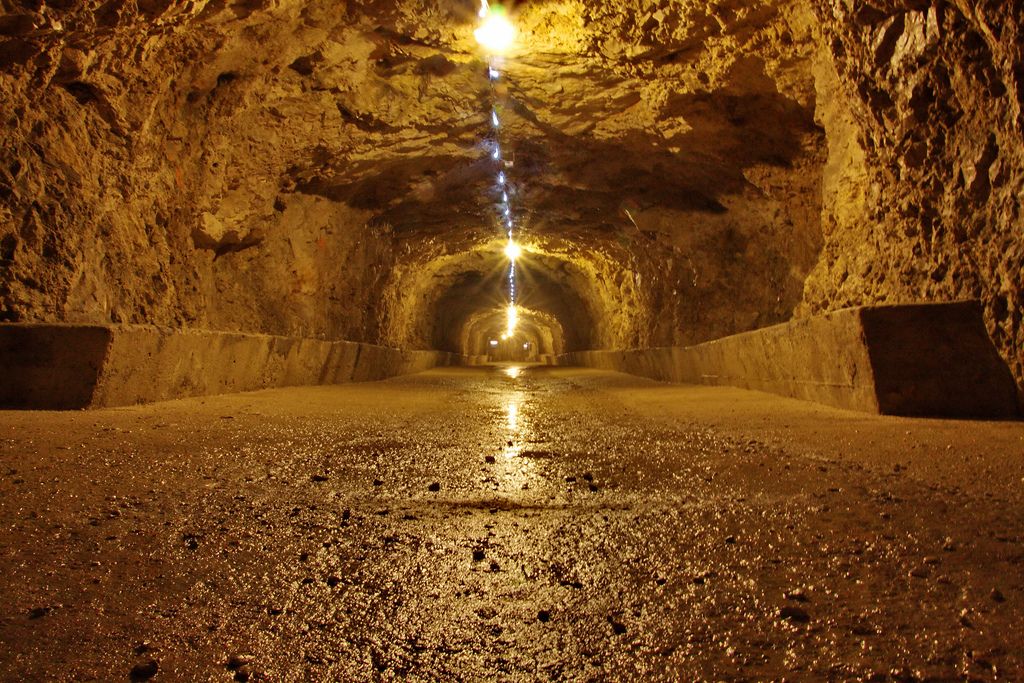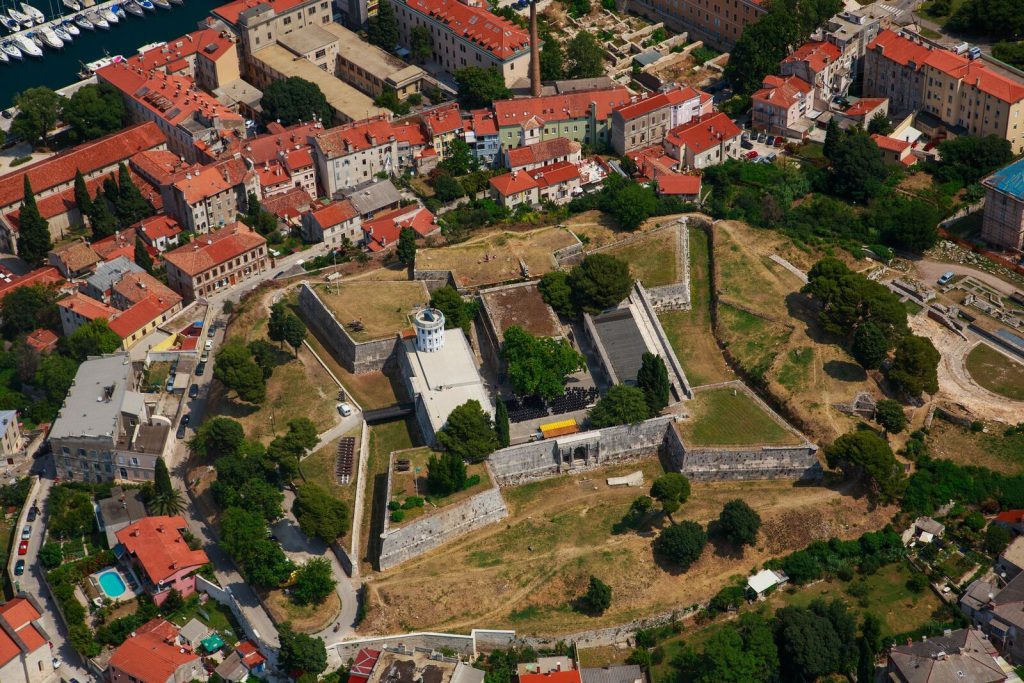The City of Pula continues to come up with innovative ways to revive its fortifications
The Istrian city of Pula is truly a historical gem, with two distinctive funds of cultural heritage dating from two separate periods in history. Pula is home to an amazing display of ancient Roman architecture, including the spectacular amphitheatre known as Arena, two Roman theatres and the Temple of Augustus located on the ancient Forum. The other part is a bit younger in age, originating from the 19th century when Pula was part of the Austro-Hungarian Empire.
The latter consists of three defensive fortification ‘rings’ enclosing the city, featuring 26 forts, eight artillery batteries, and numerous trenches and underground tunnels built between 1813 and 1918 to enforce the central naval base of the Austro-Hungarian Navy.
Even if you haven’t yet taken a tour of Pula’s defensive architecture, you’ve surely heard about one distinguished location: Punta Christo, a 19th-century fortress, nowadays hosts four music festivals in summer months – Seasplash, Outlook, Dimensions and Slurp!. Festivals aside, you’ll find another historic beauty perched on a hill in the city centre; the Venetian defensive complex named Kaštel was built in the 17th century and nowadays houses the History and Maritime Museum of Istria.

Kaštel fortress in Pula / photo credit: Romulic and Stojcic
The City of Pula has just launched an attractive project that will revitalise this particular part of their historical heritage and improve the quality of its presentation in the context of tourism. Titled ‘Fortification System of the City of Pula as a New Cultural-Tourist Product’, the project will also entail renovation of abandoned industrial zones and military objects in the city, including them in the tourist offer, reports Glas Istre on February 2, 2018.
One particular part of the project stands out as most attention-grabbing: the City is planning to connect the underground tunnels named ZeroStrasse with the fortress on Kaštel hill with a lift, uniting two distinctive cultural attractions originating from the Austro-Hungarian era and the period of Venetian rule, respectively. Both sites are situated on the same location – one above the other – and the new feature will link those two stages of the city’s historical development to present them in a unique, innovative way.

ZeroStrasse, a network of underground tunnels in Pula / Ingo Meironke on Flickr
The City of Pula emphasized the entire project is being carried out in collaboration with the Conservation Department of Pula, who have already given consent for geomechanical research which showed the location allows for such a construction project. Conservators have also approved the master plan for the upcoming reconstruction which involves a new promenade on Kaštel, with a new route to be introduced next to the University Library. The project also includes renovation of the Kaštel fortress, a new hospitality object, and a new access route for disabled visitors.
“The City of Pula has become aware of the importance of preservation, protection and renovation of the entire fortification system, as well as its revitalisation which implies including it in the tourist offer. Our plan is to continue renovating the fortresses of Pula, along with other cultural sites”, said Aleksandar Matić, Head of the City Office. He listed several examples of outstanding fortress managament which are nowadays thriving in Pula: the Aquarium in fort Verudela, and the fortresses Bourguignon, Casoni Vecchi, Punta Christo, and Monte Gosso.








